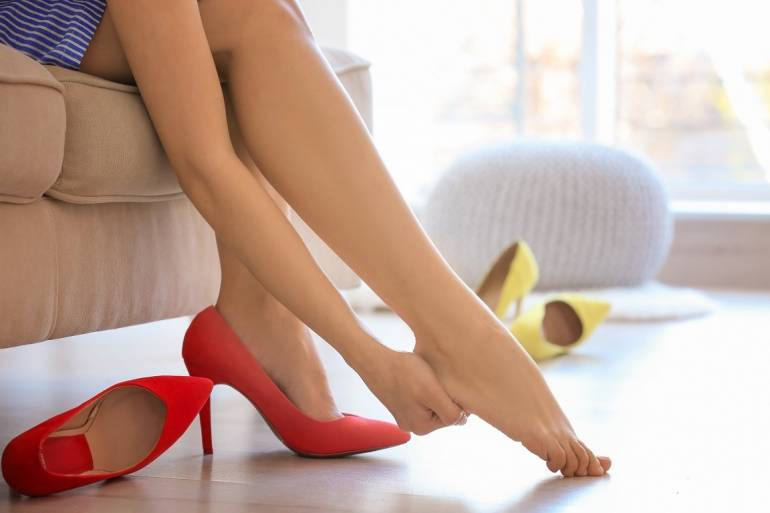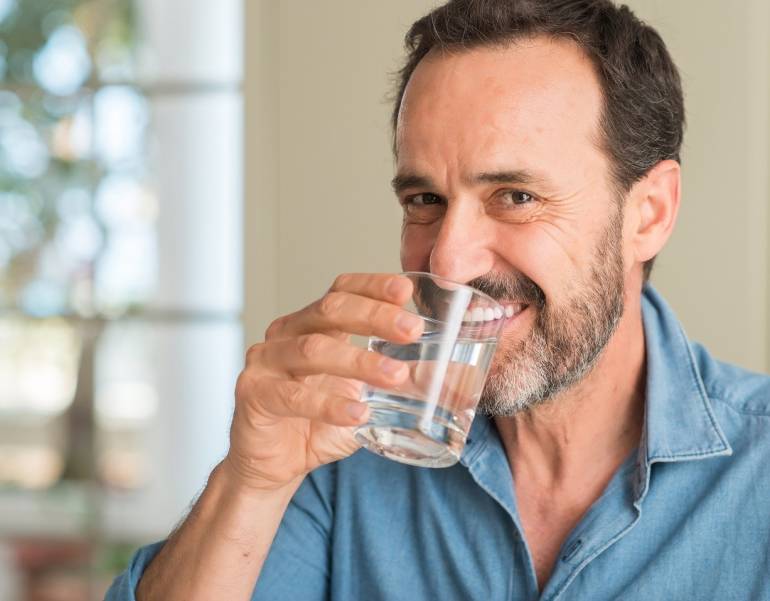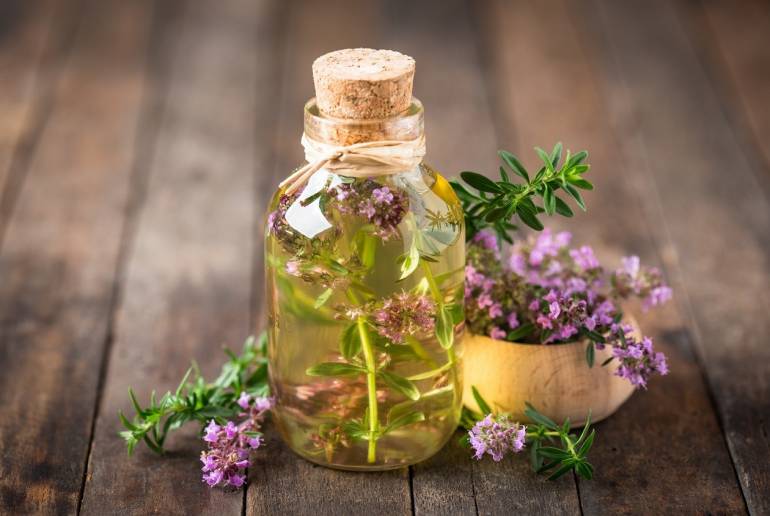Perhaps many of us have experienced heaviness in the legs, calf cramps or even observed swelling in the legs after a long, tiring day. These symptoms may be indicative of developing circulatory insufficiency in the legs. Let’s consider how we can improve blood flow in the legs and guard against the chronic form of lower extremity circulatory insufficiency.
Important role of valves in venous vessels
To better understand what contributes to impaired circulation in the lower extremities, it is useful to review the principle of blood circulation in our body.
In the lungs, blood is supplied with oxygen. It then enters the left ventricle of the heart from where, due to the contraction of the heart, it is “pushed” into the arteries. Blood flows through the arteries from the heart and flows to all tissues of the body (then we say that the blood is in the “periphery”) – including the veins of the lower extremities, supplying oxygen. It then returns through the veins back to the heart, taking harmful metabolic products and carbon dioxide with it.
How is it that blood flows against gravity, from the foot back to the heart?
Various mechanisms are responsible for this: including the sucking action of the heart, negative pressure in the chest and positive pressure in the abdominal cavity. An extremely important factor, however, pushing blood out of the lower extremities is the work of the leg muscles. During leg movements, the muscles contract, pressing on the veins and thus pumping the blood upward. It is the work of the leg muscles that causes the blood to start moving toward the heart. When the muscle relaxes – the blood continues to flow “upward” toward the heart, because there are valves in the veins that prevent it from going backward. Valves are thin “petals” that close and open, depending on the strength of tension, of our muscles in the calves. They work on the principle of a “dam”, if the muscle contracts then they remain open, and the blood is freely “pushed” towards the heart (upwards), if the muscle relaxes, then they close, thus preventing the blood from flowing back to the feet.
Lack of physical activity is a very big threat, to our valves in the venous vessels of the legs. When the valves remain closed for a long time, as a result of the lack of calf muscle contractions, it promotes the development of degenerative changes in their structure. This is a very slow process, although there are several factors that accelerate it:
- Sitting for hours, especially with a leg over or standing work,
- Wearing socks, knee socks and stockings with a strong welt,
- Wearing high-heeled shoes,
- pregnancy,
- obesity, overweight,
- Endocrine disorders, hormone therapy, hormonal contraception,
- long-term tanning,
- chronic constipation,
- The occurrence of venous leg circulation insufficiency in the family.
Damage to the valves causes blood pushed toward the heart to partially retreat and collect in the veins of the legs. A great deal of blood collects in the veins farthest from the heart, and high venous pressure is created there. The accumulating blood stretches the walls of the veins, initially leading to the formation of telangiectasias, or so-called spider veins, which have a characteristic bluish color. These are dilated venous vessels that become clearly visible under the skin. Later, more symptoms appear: edema, varicose veins and skin discoloration, until finally ulcers develop around the ankles.
Edema, like varicose veins, is caused by venous hypertension. When a great deal of blood accumulates within the extremities, at some point the venous vessels become so “overloaded” that they literally burst. The small capillaries (in this case, the smallest veins in the legs) lose the integrity of their structure, fissures begin to form in their walls and plasma (the fluid in which red blood cells and other blood elements are suspended), begins to pass through the wall of the veins and collects under the skin, causing edema. If this condition persists for a long time it also comes to pass through the walls of the veins and accumulate under the skin, contributing to discoloration.
The term “varicose veins” refers to veins that, as a result of a prolonged backlog of blood, become less elastic, fragile and unevenly dilated at certain sections, resulting in taking on a characteristic “writhing” shape. Varicose veins are an expression of an advanced stage of venous circulation insufficiency in the legs.
Later, even the smallest bump or cut is enough and an ulceration is produced, which is already very difficult to heal.
In summary, chronic venous disease of the lower extremities develops gradually, in several successive stages: from telangiectasias (spider veins) and edema, through varicose veins and discoloration, to ulcers that are difficult to heal.
The most important thing is prevention!
Do not underestimate the initial symptoms associated with blood stasis in the venous vessels of the lower extremities, including a feeling of heaviness in the legs, spasmodic pain and swelling of the lower legs. The development of full-blown venous disease, i.e. accompanied by varicose veins, swelling and hard-to-heal ulcers, can result in the appearance of severe complications:
- Superficial thrombophlebitis,
- Hemorrhage from a ruptured varicose vein,
- bacterial infections within hard-to-heal ulcers, which can even lead to systemic microbial infection (sepsis),
- Pulmonary embolism, posing an immediate threat to life.
Improve the condition of your legs
- Increase physical activity.
Incorporate into your daily schedule: cycling or long walks. If you sit at a desk at work, move your feet often. Get up from your desk every so often, take a walk. When you travel, remember to use compression therapy (compression stockings, tourniquets), which promotes the movement of blood from the lower extremities toward the heart and thus prevents it from backing up in the venous vessels of the legs. When you drive, make stops for mini gymnastics. - Include remedies that naturally support the functioning of the venous vessels in the lower extremities.
Particularly valuable are preparations that contain substances of natural origin, which have the ability to “seal” the walls of the capillaries. They are used to prevent the development of edema, and thus to inhibit the progression of venous circulation insufficiency in the legs, with accompanying: varicose veins and hard-to-heal ulcers. These preparations should be taken as soon as the first symptoms associated with the initial stage of venous stasis in the legs are noticed, such as a feeling of heaviness in the legs or slight swelling (so-called swelling).
Substances that have a sealing effect on the walls of venous vessels include escin and troxerutin:
Aescin is a compound extracted from the seeds of the horse chestnut tree. It seals and makes the walls of blood vessels more flexible, preventing them from bursting. It is particularly important in people suffering from varicose veins, bloody subcutaneous petechiae (often accompanying advanced obesity, as well as dilated and bursting blood vessels, so-called spider veins). Available preparations:
- Esceven® in the form of film-coated tablets – the preparation should be taken 3 times a day, one tablet each, after eating.
- Esceven® gel – designed for people who do not want to ingest pills, but also for those for whom taking oral preparations does not give sufficient results. In addition to escine, the gel also contains heparin, which is a substance with anticoagulant properties. Esceven in gel form is a medicinal product traditionally used for symptoms of chronic venous insufficiency. The gel should be applied 3 times a day, rubbing into the skin of the calves, a “strip” of gel about 3 – 4 cm long. The gel therapy should be used for a period of 2 weeks. If symptoms worsen or do not disappear, contact your doctor. Do not use the gel on open wounds and avoid contact with the mucous membranes of the eyes and mouth.
Both preparations should not be used during pregnancy and lactation or in children under 12 years of age.
Troxerutin is a substance belonging to the bioflavonoid group, formed by chemical synthesis from rutin, which is isolated from plants. Rutin is extracted from, among others, Japanese pearl (Sophora japonica), but can also be found in buckwheat herb, rue, tricolor violet, St. John’s wort, lime, calendula, mint and many others. Troxerutin reduces the permeability and improves the elasticity of fine blood vessels. It neutralizes free radicals, has anti-inflammatory and anti-edema effects. It reduces the tendency of platelets to aggregate (form clots), improves microcirculation (blood flow through capillaries, i.e. the smallest veins in the legs) and protects the vascular endothelium from damage. Available formulations:
- Rutoven® gel – the preparation is applied similarly to horse chestnut gel, 3 times a day. The length of application should not exceed 3 weeks.
Chronic blood stasis, in the venous vessels of the lower extremities is a serious condition, associated with numerous complications, which can threaten our lives. Therefore, if you observe the first symptoms, suggesting problems with proper venous circulation in your legs, such as a feeling of heaviness in the legs, do not wait! As a first step, try to increase your physical activity and support the venous vessels of your legs with natural substances that will prevent further development of the disease. You can reach for over-the-counter varicose vein medications, and if they do not help, be sure to see a specialist.







